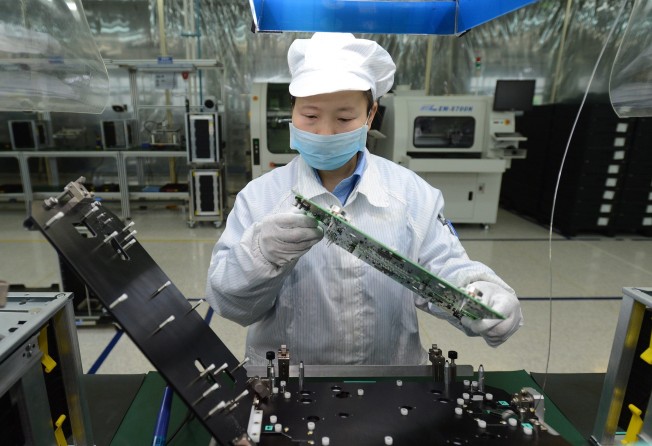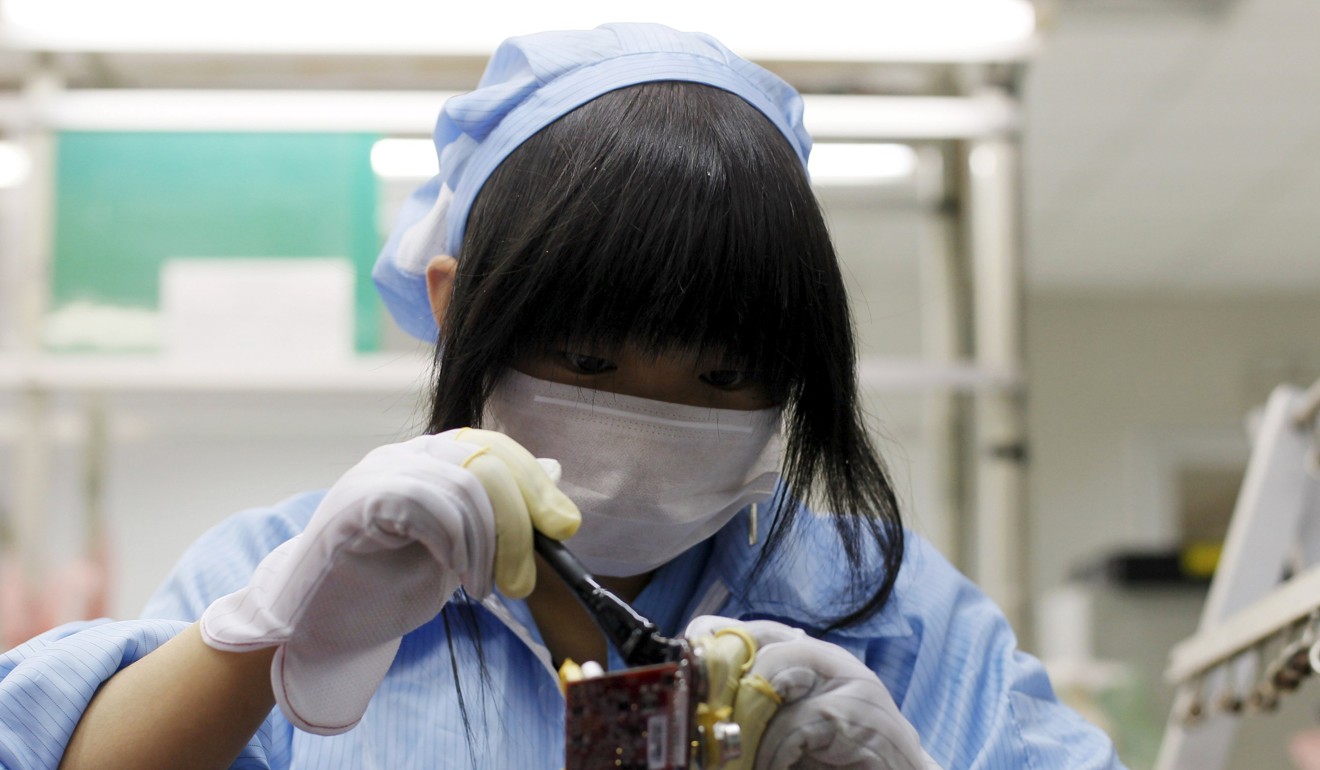
Exporters in China’s manufacturing heartland brace for impact of US tariffs
Firms expecting to be hit directly by the duties may raise prices for American buyers, ship products via another country or even relocate their operations

Export-oriented businesses in China’s manufacturing heartland Guangdong say they are bracing for pain after the United States escalated trade tensions with the country.
With Washington due to start imposing 25 per cent tariffs on the first batch of Chinese products next week, some exporters are worried that it could erode their price advantage, and that orders from their US clients will dry up, according to manufacturers and analysts.
Those who will be hit directly by the duties are scrambling to find ways to manage the impact, including raising prices for US buyers, shipping products to another country before sending them to the US, and even relocating operations to other countries such as India, Vietnam and Mexico, they said.

US President Donald Trump on June 15 said the US would slap 25 per cent tariffs on US$50 billion worth of Chinese goods, with the first wave covering 818 products worth US$34 billion taking effect on July 6. China immediately retaliated, imposing 25 per cent duties on US$50 billion worth of US goods, saying its tariffs on a list of 545 US goods worth US$34 billion would also begin on July 6.
While China’s export machine as a whole should be able to absorb the blow since it will only affect a small proportion of shipments, the tariffs could be disastrous for individual companies that rely on the US market for survival.
Gloria Luo, sales manager at a Guangdong-based manufacturer of automotive parts and industrial moulds, said her company would be hit hard by Trump’s measures, since 40 per cent of its sales are to the US and their products are on the list of those to be targeted.
Luo, who did not want her company identified, said they made moulds for American clients that would be used by companies like General Motors because “the price differential between most US-made automotive moulds and our products is about 30 per cent”.
A 25 per cent tariff was “precisely tailored” to kill their export business to the US, she added.
Luo said Chinese products still had a narrow price advantage over those made in the US, but with the tariff they would be less competitive in the American market against goods from Canada and Germany.
“Our clients will definitely cut their orders from China and switch to suppliers in Europe and the US,” she said.
The sparring between Beijing and Washington over trade had left Luo’s company and its US clients frustrated and facing an uncertain future, she said, adding that she had been bombarded with emails from American customers asking for advance shipments and delivery before July 6.
That was a headache for production because “many automotive parts, like bumper moulds, take months to produce properly”, the sales manager said.
With US$120 million of its automotive parts sold to overseas markets last year, Luo’s company is just a tiny cog in China’s export machine that sold some US$2.3 trillion worth of products in 2017. But the company’s “thousands of workers” represent a vulnerable segment of the Chinese economy that will bear the brunt of Trump’s trade hostilities.
Guangdong province in China’s south is part of the Pearl River Delta, which has become known as the world’s factory because of its tens of thousands of manufacturers that can make products faster and cheaper than is possible in wealthier countries.
Although the financial crisis a decade ago wiped out many labour-intensive workshops in the region, the factories involved in more sophisticated production of industrial parts, electronics and hi-tech hardware have survived and integrated into global value chains.
But the region could be left reeling when the US tariffs kick in, according to Peng Peng, vice-president of the South Nongovernmental Think Tank in Guangdong.
The 25 per cent tariff on US$50 billion worth of products could knock 1 percentage point off the province’s economic growth rate if both the direct and indirect impact of the move is taken into account, Peng said.
“Shenzhen, the hub for China’s electronics and hi-tech hardware manufacturers, will be hardest hit in the short term,” Peng said.

The Office of the United States Trade Representative has said the tariffs target Chinese products from sectors that contribute to or benefit from the “Made in China 2025” policy – supporting domestic hi-tech industries – in areas “such as aerospace, information and communications technology, robotics, industrial machinery, new materials and automobiles”.
For smaller exporters, the move could put an end to their sales to the US.
Chen Xinshuo, who runs a trading company in Guangzhou that sells electronics such as light-emitting diodes, transistors and semiconductor devices, said if businesses like his were to survive they would have to shift focus to the “South American or Middle Eastern markets”.
But the US market accounts for about a fifth of the country’s total overseas shipments, and for Chinese manufacturers operating in niche areas where they will continue to hold a price advantage, the tariff burden is likely to be transferred to their US buyers.
One of those is Liu Junyi, the founder of Hangzhou-based tech start-up MusicLens, who said she was confident the company would be able to cope with the duties. The company makes sunglasses with tiny inbuilt speakers, enabling the wearer to listen to music. The product, priced at US$120 to US$180, will be launched in 12 countries this summer.
“I will simply ask for a 25 per cent price rise in the US market to offset the duty,” Liu said.
Another exporter based in Shenzhen, Zheng Bo, said he would also pass the extra cost onto consumers. His company Livall makes smart bicycle helmets, and of the 300,000 exported last year, 15 per cent went to the United States.
“We just don’t want to lower our profit margin,” Zheng said.